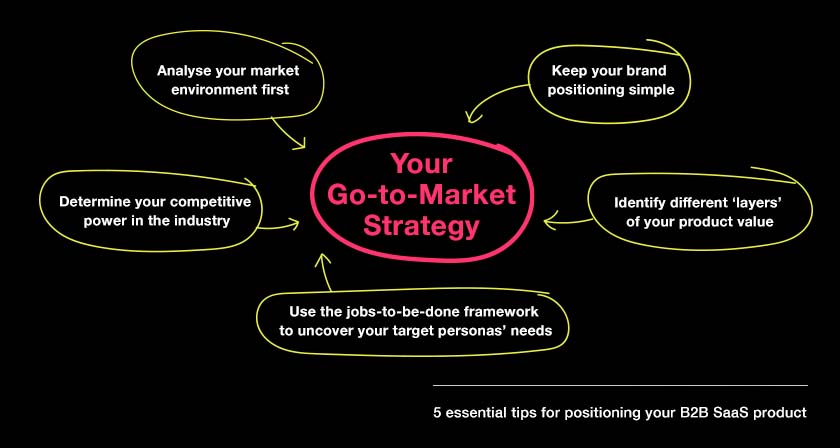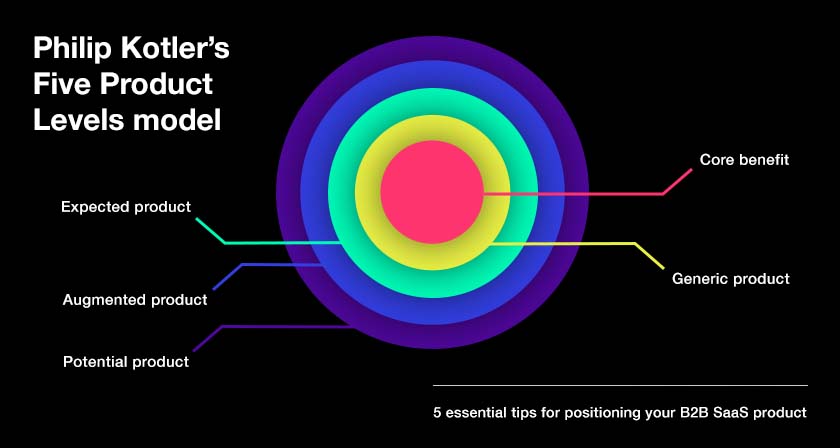
5 tips for a successful go-to-market strategy
Planning to take your product or service to market? Here are some key points you should consider.
Having an effective go-to-market (GTM) strategy is essential. Not only does it make a successful launch more likely, it also increases the chances of your long-term success. This article shares some recommendations to consider when you’re planning to launch a new product to market.
Planning Your Go-To-Market Strategy

Go-to-Market Strategy Tip 1: Analyse your market environment first
Before you start developing a go-to-market strategy, you must first understand the market itself (and how it’s evolving). Without thoroughly analysing the space you’ll be competing in, you risk ending up with an approach that’s too generic or unrealistic to be effective.
There are various approaches you can take when it comes to understanding your market. However, a popular way to do this is to conduct research on macro-environmental factors that could affect your ability to successfully deliver a unique value proposition to your customers. Factors may be political, economic, social, technological, environmental, or legal. Tech and SaaS companies, for example, may want to pay close attention to technological and legal trends in particular, like how quickly innovation is adopted by your target customers and the data compliance laws you’ll need to follow.
Regardless of your approach, it’s key that your findings are relevant so you can draw useful insights and hypotheses from it. Instead of simply analysing current market conditions, predict where things might be heading.
Go-to-Market Strategy Tip 2: Determine your competitive power in the industry
Other than analysing your chosen market, it’s also important to examine the state of your industry (a key part of your external environment). This allows you to look for opportunities that will help you stand out. A common framework to use is Porter’s Five Forces Model, a strategic planning tool which—if used correctly—can help you predict how much competitive power you’ll have once you enter the market with your new offering. This will in turn affect your long-term profitability. Use secondary research to help you answer to the following questions:
- Competitive rivalry: how intense is the competition between existing players?
- Threat of new entrants: how easy is it to enter the market (and how vulnerable will you be to new entrants once your product becomes established)?
- Threat of substitutes: how likely will buyers switch to alternatives that fulfil the same need?
- Buyer power: how much bargaining power do they have?
- Supplier power: how many alternative suppliers can you switch to for external resources you need for your product?
Once you’ve gathered insights on all of the above, you should be in a good position to begin deciding other important components of your go-to-market strategy, like your pricing model.
Go-to-Market Strategy Tip 3: Use the jobs-to-be-done framework to uncover your target personas’ needs
An effective go-to-market plan always involves detailed qualitative research around your target customers, as it helps you create audience personas. Determining who they are can be a challenging task. According to Gartner, a B2B buying group typically consists of 6 to 10 decision makers. It’s essential that marketers identify their roles (this means both their formal job titles and their role in the buying process). However, this isn’t enough on its own. After all, just because someone is a part of your ideal segment doesn’t necessarily mean they’ll purchase your product.
This is where the jobs-to-be-done framework can make a difference. Clayton Christensen, the pioneer of the framework, proposes that people buy (or in his words, ‘hire’) products because it will help them with a ‘job’ they believe needs to be done. This ‘job’ can be mundane or important. It also often has emotional and social dimensions (not only functional ones). Companies that design their offerings around what customers wish to accomplish are much more likely to resonate with them. Thus, adopting this approach could help marketers create powerful messaging that is tailored to each relevant persona.
Go-to-Market Strategy Tip 4: Keep your brand positioning simple
Many marketers will acknowledge that positioning is one of the most important elements of your go-to-market strategy. Inserting a completely new brand into potential customers’ minds is not an easy feat. What’s more, it can be incredibly difficult to change their perceptions once they already have an understanding of your product.
Because there’s only one ideal opportunity to make a good first impression, it can be tempting to believe: “if we say more about the brand, customers will find more meaning in it”. This should be avoided—after all, people are exposed to brands every day and are only willing to assign meaning to them once brands have proven their relevance. Therefore, it’s especially important to leave no room for confusion or misinterpretation with your positioning. As a new brand, make it easy for customers to effortlessly connect with your brand by crafting a strong positioning statement that lets them instantly categorise your product.
Go-to-Market Strategy Tip 5: Identify different ‘layers’ of your product value
When you define your product offering, it’s important to keep in mind that a single customer will have different levels of expectations for it—so it’s key that your company can meet all of them. In order to do this, marketers should anticipate what these expectations will be before launching a new product. According to Philip Kotler’s Five Product Levels model, there are different ‘layers’ to a product’s value:
- Core product: what your product is at its most basic form.
- Generic product: the necessary characteristics, attributes and qualities that the product must have to function.
- Expected product: what customers normally hope and expect to receive by purchasing it.
- Augmented product: the ‘added value’—what customers usually see as the unique and differentiating brand benefits that come with the product.
- Potential product: what the product might be in the future.

An applied example for this model might be a software platform that automates your admin tasks. At a fundamental level, its core benefit is to save you effort and time. You need the platform to be fully functional with no bugs—however, as with all modern software, you also expect it to be user-friendly and easy to use. Plus, the differentiating benefit that draws you in is the fact that you get free customer service support at all times. Lastly, you may also feel like committing to the purchase, because you believe that the software will continue to offer useful benefits in the future (such as new updates and integrations).
In short, all of the expectations a potential customer may have about your product makes it necessary that companies plan accordingly when taking a new product to market.
Key Takeaways
Having a failsafe go-to-market strategy requires meticulous planning and analysis. This includes:
- Analysing your external environment
- Determining your competitive position, strengths and weaknesses
- Uncovering the truth behind your customers’ needs
- Crafting a memorable positioning statement…
- …and ensuring that you can deliver value at all product levels.
Doing so will help you avoid major (but mostly avoidable) challenges, develop a top-notch go-to-market strategy and ultimately help you to deliver a successful product launch.
Read the latest positioning trends and insights.
Tap into our brand and product positioning, storytelling, and creative expertise to inspire your next strategic move.

